Affairs: Urbanism / Monte
Revel in the details
Swiss village Monte is living proof that minor urban interventions can be a major boost to quality of life.
The owner of the village shop in Monte, in Switzerland’s Italian-speaking southernmost canton Ticino, has the panini ready. She knows the order of the two architects visiting her shop well, having met Rina Rolli and Tiziano Schürch two years earlier when they analysed her shop and the surrounding streets, looking for ways to fine-tune Monte’s public spaces to better serve its residents. During their visits, the shop had often served as a meeting point. Now, thanks to new interventions from the duo, its architecture shows off their work.
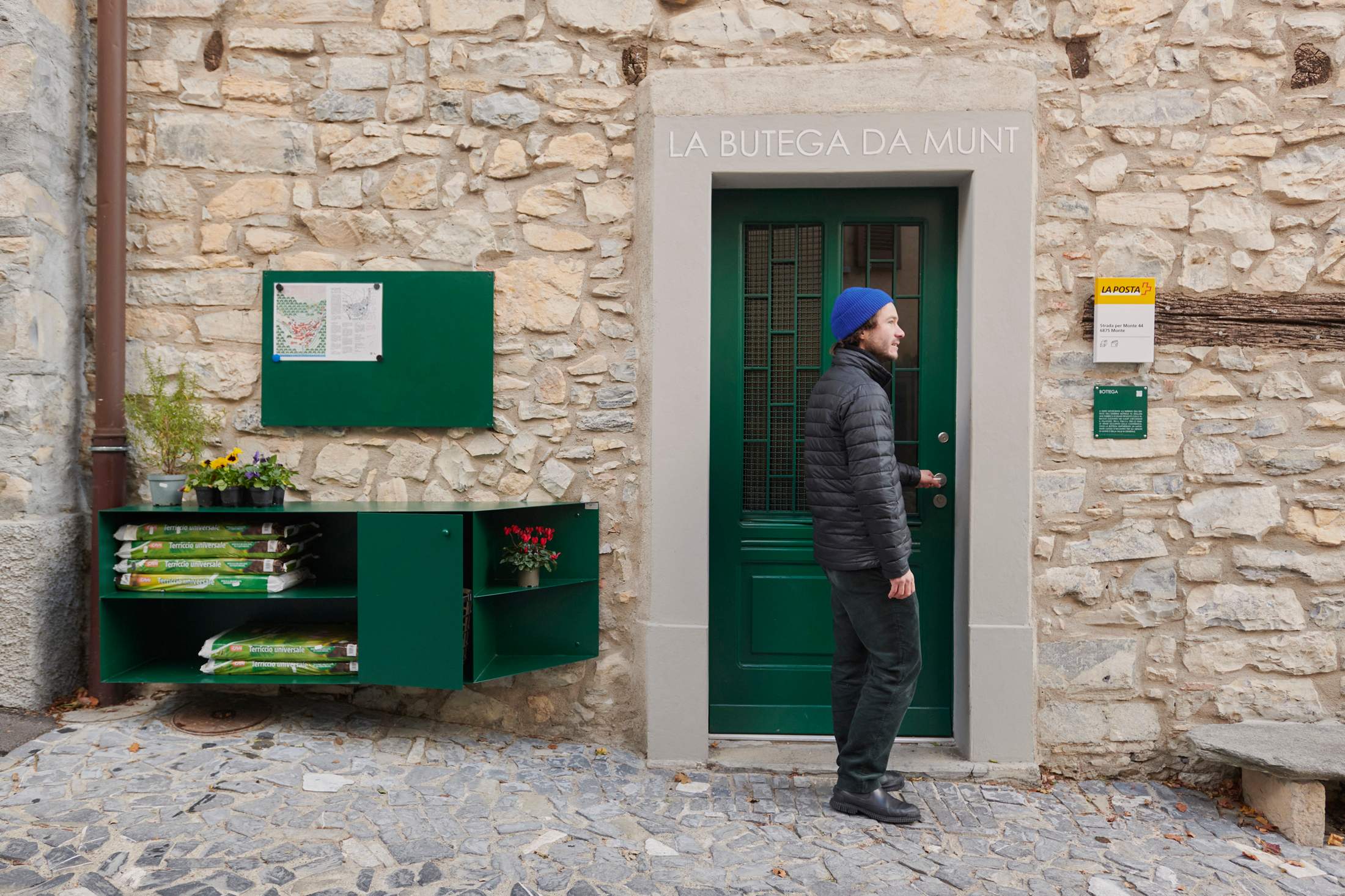
The architects, who co-founded Zürich-based design office Studioser in 2019, have paved the street in front of the building and installed a storage cabinet that now acts as a sort of shop window, showcasing some of the business’s products. Inside the space, which also serves as a café, tables have been rearranged and new shelves have been built. These additions are almost invisible but have noticeably enhanced everyday life in Monte.
The project is the outcome of a study that was commissioned by three Ticino municipalities, in partnership with the Swiss Senior Citizens’ Council. The aim was to find ways to improve the lives of elderly residents in Switzerland’s remote regions. This resulted in a list of 10 recommendations, including social, technical and building guidelines, for local governments to implement. These recommendations prompted the municipality of Castel San Pietro, where the town of Monte is located, to commission Studioser to develop practical solutions.
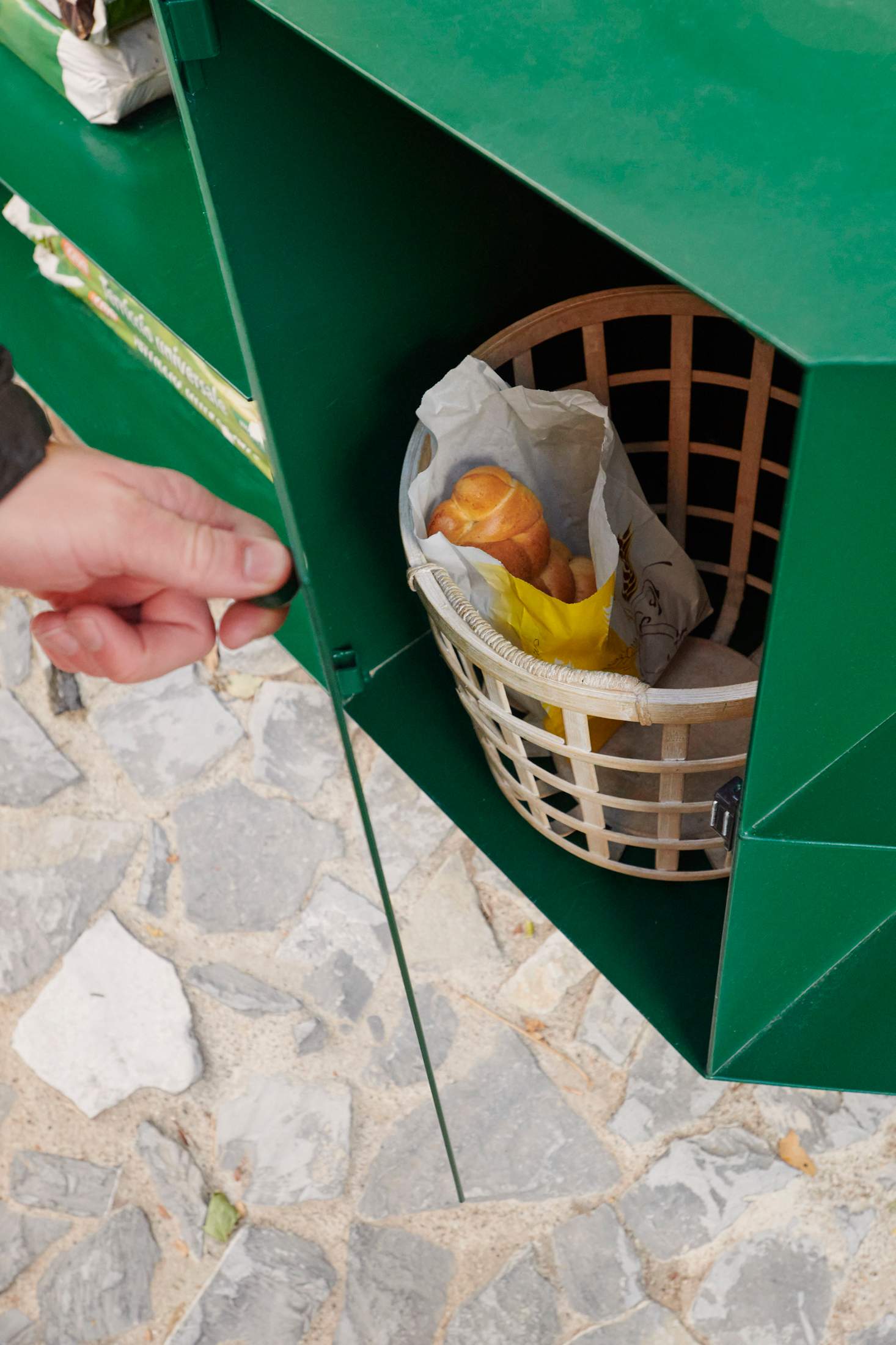
In response, the architects implemented 13 small projects, including the shop. In front of the former community centre, they built a large natural-stone table, around which metal chairs are placed for residents to meet and socialise. Nearby, handrails provide support along narrow streets and another bench allows locals to stop to rest. A small fountain was added at the entrance to the cemetery, its marble slabs and concrete telling the material history of the region, and a tree was planted next to another fountain in the centre of the village, which is surrounded by a small wall that serves as a place to sit.
Situated on a hillside in Valle di Muggio, Monte’s streets are steep and narrow, and therefore not wheelchair accessible. Therefore, these new modifications allow the town’s elderly population to stay in Monte for as long as possible – it also has benefits for the local youth. Children can use the handrails as a ball track, with marbles available for purchase from the village shop. “Our goal was not to just build handrails throughout the village but rather, like the architect Lina Bo Bardi, to link poetic ideas with political and social requirements,” says Rolli.
The two architects spoke to many of the village’s 100 or so residents, who opened up their photo albums in order to share their memories of the past. During this informal participation process, the architects got to know the village’s history, which they drew on for inspiration for their work. “Our architecture makes the history of the place visible,” says Schürch, explaining that the upgrades are akin to heritage conservation. Studioser’s work, Schürch adds, also references Austrian designer Hermann Czech’s theory of “silent architecture” and the notion that architecture can respond to everyday needs with subtle adjustments.
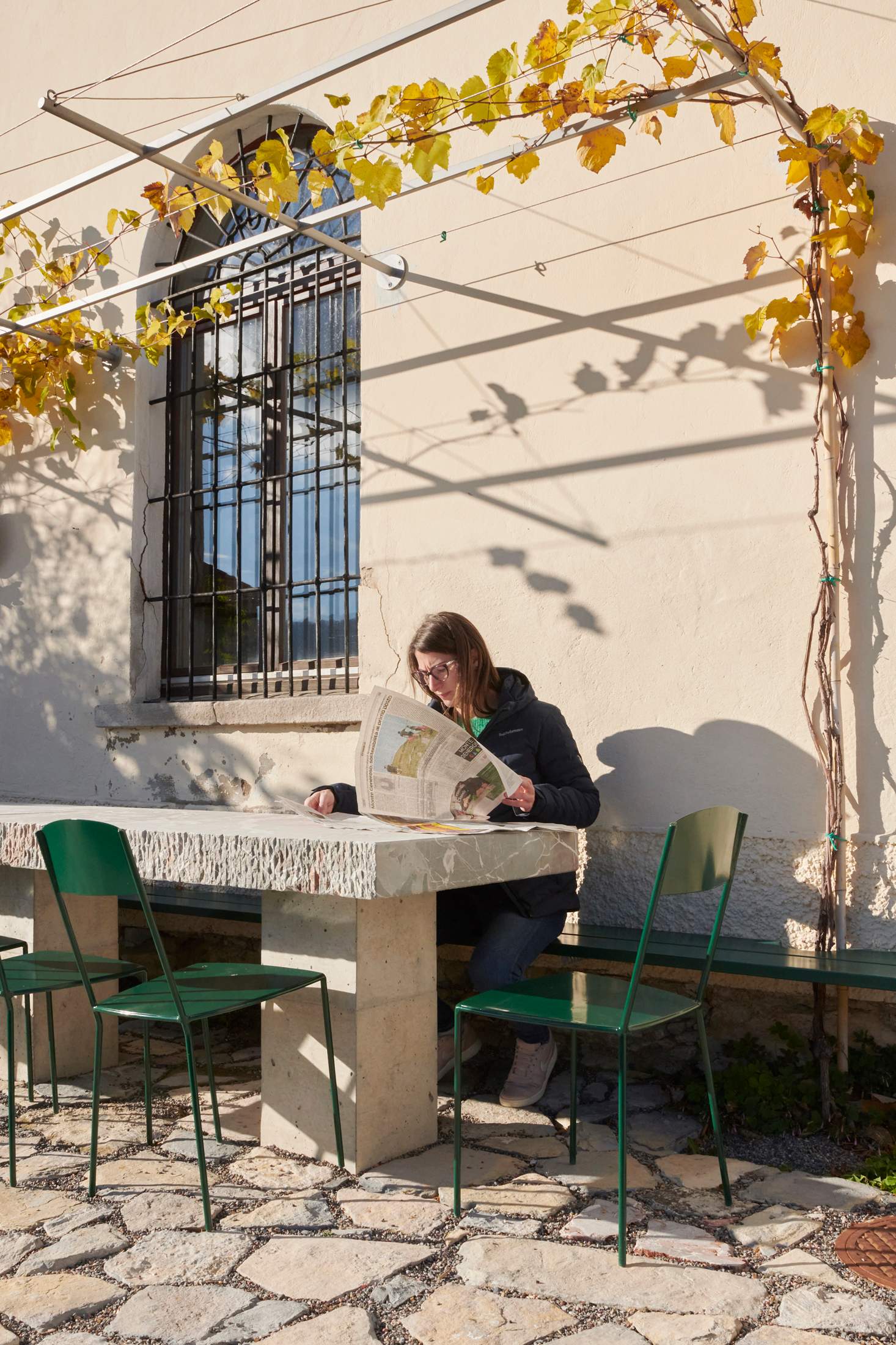

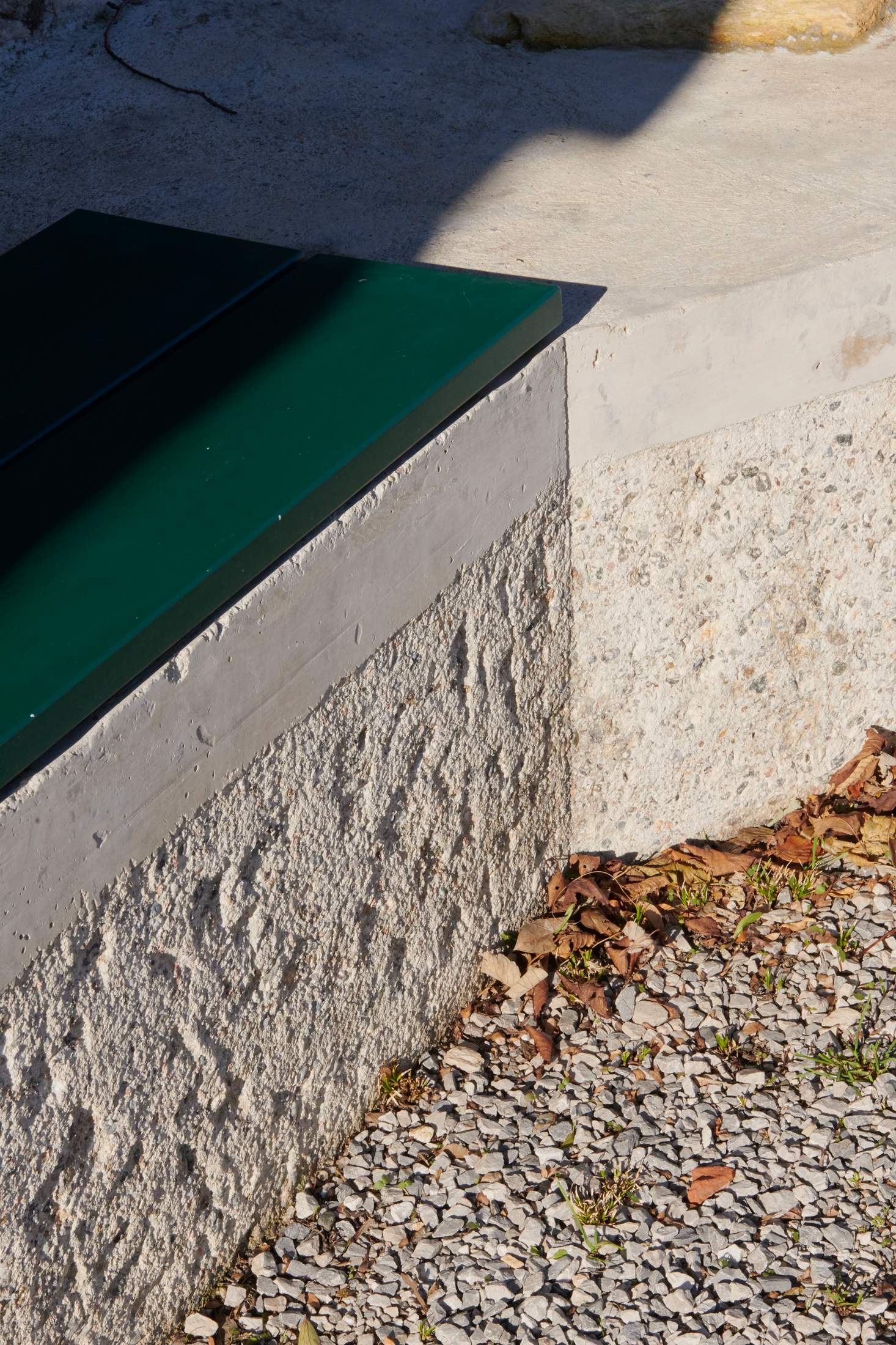
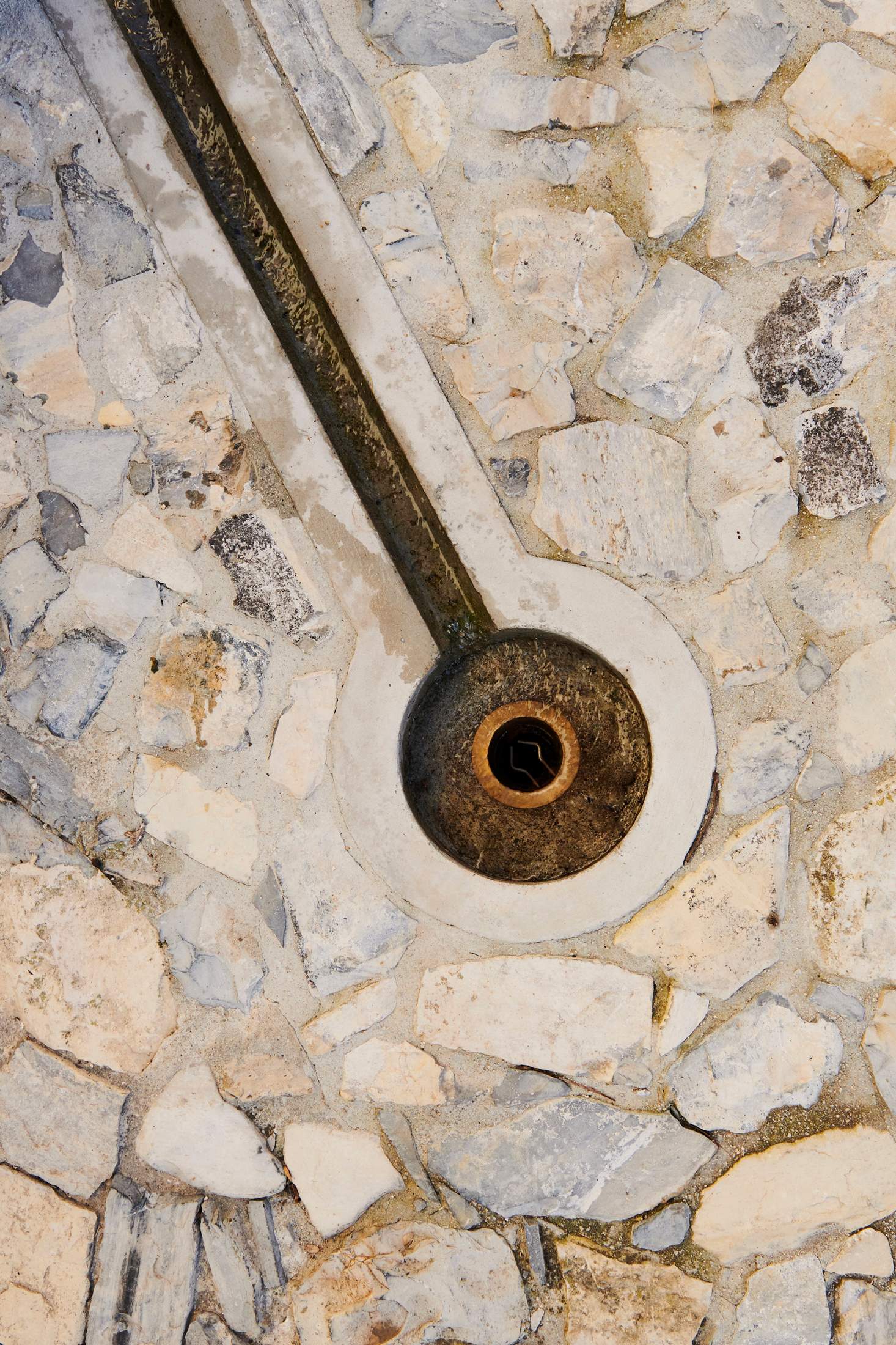
The resulting architectural measures are atmospheric as well as practical – and serve as a social tool. By involving the population and then designing precise interventions, Rolli and Schürch have created modifications that subtly reflect patterns of everyday use. “The best solution is of little use without people’s commitment,” says mayor Alessia Ponti. “The interventions are small, but important for people. Other places can learn from Monte.”
Naturally, the project has had an effect beyond the village. Nearby town Castel San Pietro plans to renovate its town centre too. The neighbouring municipality of Breggia has also commissioned Studioser to carry out a similar analysis of their town. In other places and on a larger scale, this poetic approach might not have the same effect but an approach to urban improvements, built around the careful reading and adjusting of a location, offers potential for public spaces that are often neglected. It will become especially important for certain communities whose population is migrating and whose financial framework for big improvements is limited.
In contrast to the Bilbao effect, which transforms a city with a high-profile project, the Monte effect has a far more subtle impact on the location. Sadly, it cannot stop ageing and migration in the villages; larger economic contexts and realities of life are responsible for this (though in Monte, at least, the population was already stable before the project). But using Monte as an example, an approach to village maintenance – enhancing a place’s strength with acupuncture-like treatments – can certainly enrich the lives of those who stay and even attract new people. The adaptations are a kind of architecture that enables a better life in an old environment – with little effort – but lots of imagination.
This story was translated by Monica Lillis from a report by Andres Herzog for ‘Neue Zürcher Zeitung’, where this article first appeared.
Monocle comment: Take a leaf out of Monte’s book and make your neighbourhood more liveable with small urban interventions. Try modest adjustments that benefit the old and the young – a bench on a steep street, for instance.


